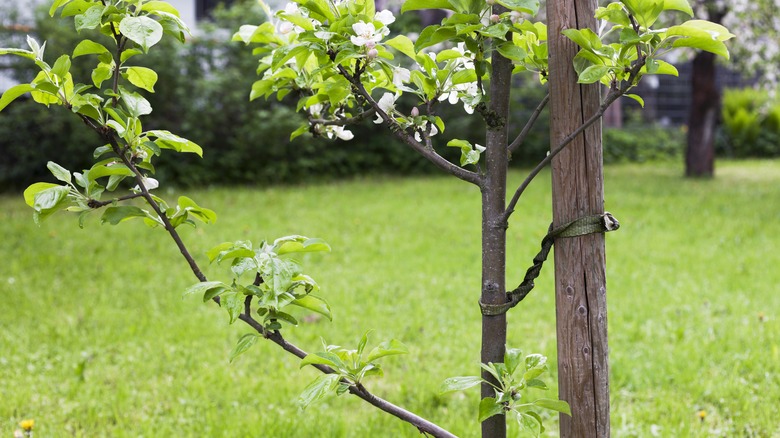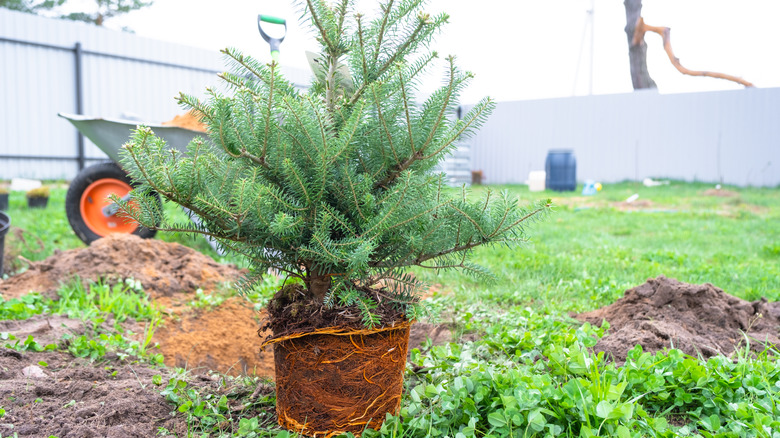As a gardener, you may have noticed that young trees often come with stakes attached to their trunks. This is done to help support the tree as it grows, especially in areas with high winds or poor soil quality. However, staking young trees is often unnecessary.
Staking young trees helps to prevent them from being uprooted or damaged by wind. This is particularly important for trees with top-heavy canopies, which can easily be uprooted if not properly supported, or in urban areas with tall buildings and pavement that can create wind tunnels and also have a lot of foot traffic. To this end, staking can help to keep the tree upright, ensuring that it grows straight and true, rather than leaning or twisting unnaturally as it attempts to anchor itself with sturdy roots. In extreme wind, without stakes, a young tree may be bent or broken, causing irreparable damage to its growth and structure. If that happens, you’ll then have to straighten out your leaning tree.
Even when you do choose to stake a tree, it should only be left for a short period of time and not indefinitely. Young trees should only be staked for the first growing season, to help the tree learn to stand on its own without relying too heavily on the stake.
The risks of staking young trees

While staking young trees is important for their growth and development, there are also some drawbacks to consider. For one, staking can restrict the tree’s natural growth pattern by not allowing it to sway back and forth in the natural wind. This can cause it to become dependent on the stake for support rather than developing its own root system. Trees that aren’t given the opportunity to develop their own root systems tend to establish slower and weaker roots. This can lead to a weakened tree that is more susceptible to disease and pests.
The truth is that some trees may not require any staking at all. Species with strong, flexible root systems are generally able to support themselves without any assistance. Staking these trees can actually hinder their natural growth, as it prevents them from developing the necessary strength to stand on their own.
On a purely aesthetic level, staking young trees can also be unsightly, especially if the stake is left in place for too long. As the tree grows, the stake can become a visual distraction, detracting from the tree’s natural beauty and creating an eyesore on the landscape.
How to know if you should stake your tree

To determine if you should stake a young tree, first consider tree species. Some trees, such as evergreens and conifers do not require staking. Others, like fruit trees that provide a bountiful harvest or top-heavy trees with a large canopy, may benefit from additional support. If the tree is less than six feet tall, it is usually not necessary to stake it. These shorter trees are generally able to withstand wind and weather without support.
Considering wind exposure is paramount. If your tree is in an area with strong winds or is at risk of being blown over by passing vehicles, staking may be necessary to provide extra support and prevent damage. In addition, balled and burlapped trees, or trees that have been transplanted from a container, may need staking to help them establish a strong root system before they can support themselves simply because their root system is often sliced at the nursery.
If you’re unsure whether to stake a young tree, you can consult with a certified arborist or tree care professional for guidance. They can assess the tree’s size, species, soil conditions, and overall health to determine the best course of action.



